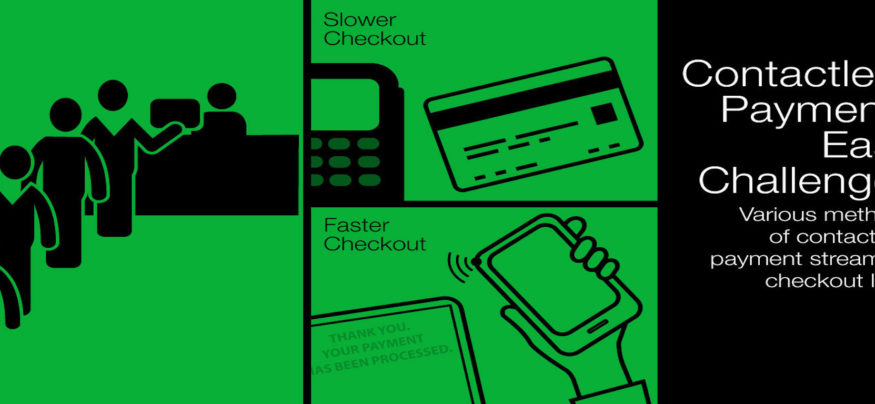The holiday gifts have been shared and unwrapped, but now shoppers are visiting their favorite brands — with their credit card in hand — in search of post-holiday deals. Besides great sales, shoppers also demand that their top retail spots keep payments secure. While the EMV credit card standard is in full swing, merchants are looking to additional secure payment options, including contactless payments, to bolster shoppers’ peace of mind.
Retailers of all sizes were definitely on shoppers’ “nice lists” this year, as retail sales jumped almost eight percent between Black Friday and Christmas Eve compared to the same period last year, according to MasterCard SpendingPulse, a report that studies transaction and survey data on purchases made with credit cards, cash and checks.
Post-holiday sales will only bolster these numbers as consumers are still eager to shop, some using an EMV credit card. During these visits, however, long lines are not at the top of their lists. In fact, ease of checkout was the number one in-store priority for shoppers this holiday season, according to the “2015 Holiday Outlook,” a study from PwC that includes responses from more than 2,000 consumers and 230 retailers.
The Naughty List
While many brands relied on newly issued EMV credit cards to meet their consumers’ security demands, 28 percent of EMV payment cardholders found usage “confusing or bothersome,” or worse, avoided stores with EMV, according to “U.S. Consumers and Credit: Potential Disruption to Issuers,” from Mercator Advisory Group. Among the top concerns among chip-card users is the length of time it takes to process these card transactions.
As users prepare to pay via chip-enabled cards, they are prompted to insert the card into a dedicated slot on EMV-programmed readers. The reader then verifies the chip via dynamic authentication capabilities that ensure the authenticity of the card. Users are then required to enter a PIN (and a signature, in some cases) for additional security. It is a process that can take up to 15 seconds to complete — a duration that is longer than a traditional magnetic stripe transaction. If a shopper tries to remove the card too soon, the transaction is denied, and must be reinitiated, further slowing transaction time.
Alternate Avenues
While merchants are eager to embrace the security of EMV, it is also not the only payment security answer — and especially not the most cost-effective. Contactless payments are emerging as another option to drive this security. Driven by near field communication (NFC) technology, contactless payments replace the physical card swipe by wirelessly transferring payment data from a mobile device to an NFC-equipped payment terminal.
Of course, there are many flavors of contactless payments that also streamline checkout lines. One is magnetic secure transmission (MST), a process that transmits payment data between devices and payment terminals via magnetic waves, and works in conjunction with an app that stores a user’s card details, allowing them to make contactless payments with a mobile device. Unlike other methods of payment, MST does not require special point-of-sale (POS) equipment, which is a benefit for small retailers on tight IT budgets.
To further spur the adoption of contactless payments, Samsung Pay incorporates all three capabilities, and manages security across Galaxy smartphones through its KNOX platform, which comes installed on Galaxy devices. The platform is designed to provide top-tier security for mobile payments, such as data encryption.
As the 2015 holiday shopping season slowly comes to a close, merchants are realizing that strong assortments and optimal pricing are just as important as ease-of-use and speed during the checkout experience when it comes to delivering value. While the EMV standard is a great option, contactless payments are gaining traction as a viable payment option for the retailer community.





